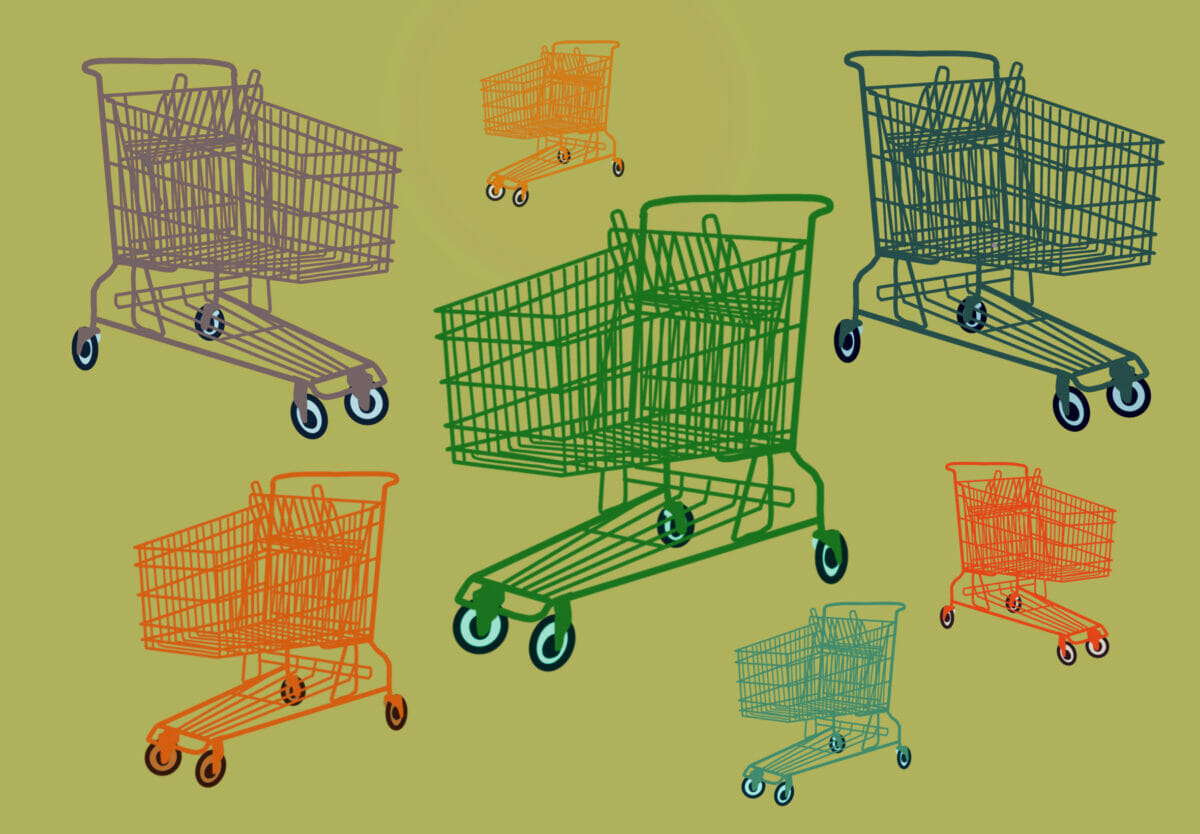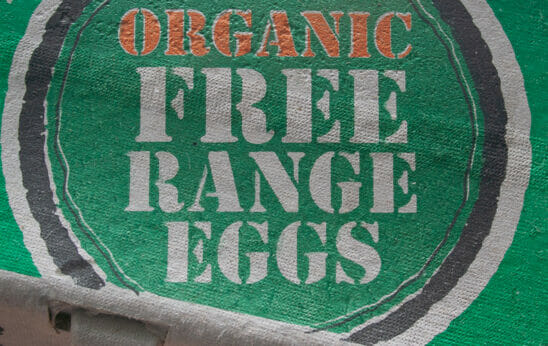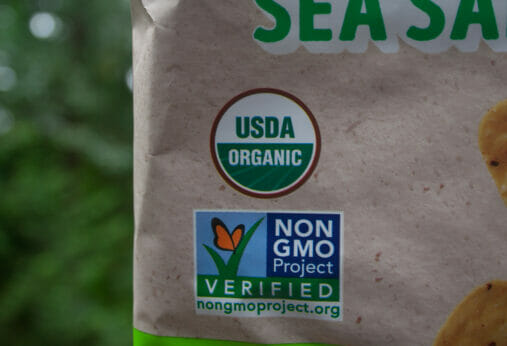What’s in a Name? Food Labels, Explained
Food labels can be difficult to understand and interpret, so we’ve created a glossary of some common ones that you’ll see at the grocery store.
What’s in a Name? Food Labels, Explained
Food labels can be difficult to understand and interpret, so we’ve created a glossary of some common ones that you’ll see at the grocery store.

Illustration: Rose Garrett / Modern Farmer
Do you know what “cage-free” means? How about “free range”? “Pasture-raised”?
Some of the terms used on food labels are official certifications, enforced by the USDA or a nonprofit entity, and the presence of the certification means that the farming operation has been verified in some way for compliance. Other common terms or phrases refer to qualities that are not regulated at all. This means that companies can use these phrases on their packaging whether they conform to a consumer’s understanding of what that label means or not. To make things even more complicated, many certifications require a lot of labor, effort and expense on the producer’s behalf, meaning that small farms can be at a disadvantage when it comes to garnering these certifications, even if they meet the requirements.
As a consumer, it can help to understand what you are looking at and what it means. Below is a list of definitions for common phrases on food labels. But there are many more beyond the ones we have listed.
To help you evaluate their meaning, ask yourself these questions: If it’s a certification, who is the governing body and how do they verify compliance? If it’s not a certification, does the company clarify what it means by the term? Can I find additional information about the product separate from the words used on the label?
Certified and/or regulated
USDA Organic: You can find this certification on meats, dairy products and produce. This certification prohibits the use of synthetic pesticides and fertilizers. Genetically modified organisms (GMOs) are also not considered organic. For meats with this label, synthetic growth hormones are not permitted, and the animals must have been fed a diet that is 100 percent organically grown. This certification requires inspection to verify that standards are being met. After certification has been granted, the operation must be inspected annually to maintain compliance.
Cage Free: This term refers to poultry that live indoors without cages and have access to food and water. The USDA does not define how big this indoor space must be. Verification of these parameters varies widely, according to the USDA. The Quality Assessment Division of the USDA will verify a cage-free operation during paid grade and certification services.

Free Range: This means that the animal spends part of its time outside, uncaged. However, there is no regulation of the amount of time that the animal may actually spend outside, nor how big the outdoor space is. The outdoor space can be fenced or netted in. Farms must provide proof to the USDA Food Safety and Inspection Service of free-range conditions.
Naturally Grown: This certification is an alternative to the “USDA Organic” label. The process to be certified “USDA Organic” can be cumbersome for farmers, so the “Certified Naturally Grown” label uses the same requirements but is verified by a team of CNG farmers, not the USDA. Be aware—this is different than when the word “natural” or “all-natural” appears alone on a label. See the list of items not backed by certification or regulation for more information.
Fair Trade: The Fair Trade USA certification was developed to help ensure fair working conditions for farmers and growers on some commonly imported products such as chocolate, tea, coffee, honey, bananas and more. Fair Trade USA checks for things such as fair wages, safe working conditions, lack of child labor and ability to unionize. However, there have been multiple documented instances of companies achieving this certification without meeting labor standards.

Animal Welfare Approved: This certification is not administered by a governmental body but by the nonprofit A Greener World. Farms that receive this certification raise their animals in pasture or on range and allow the animals to behave and move in a way that supports their well-being.
Certified Regenerative: A Greener World also provides a certification regarding regenerative practices—farming intended to be better for the environment. But it is also worth noting that this is not the only certification program evaluating regenerative standards, and there is some debate in the industry about what exactly being certified “regenerative” should mean.
American Humane Certified: This certification is granted by American Humane to practitioners of animal agriculture. It claims to use a scientifically informed set of criteria to evaluate whether animals are being raised in suitable and healthy living conditions—everything from enough space to access to shade. However, animal welfare advocates have called the certification an example of humane washing because it still allows for practices such as caged confinement.

Grassfed: For grazing animals such as cows, the USDA defines “grassfed” as animals that have access to grass or other pasture forage during the growing season and derive the majority of their nutrients from this source. It does not set parameters for pesticides, growth hormones or antibiotics.
Non-GMO Project Certified: This certification is run by nonprofit organization the Non-GMO Project. It is granted to products that do not use genetic engineering.

Pasture-raised: This does not require third-party verification, so it’s hard to know what it means to the producer. It is best if you can find additional information to verify that the animal does indeed spend a significant amount of time in the pasture. If you’re looking at meat from a ruminant animal, “certified grassfed” will mean more than “pasture-raised.”
Raised Without Hormones: This term is mostly for cattle, which are sometimes supplemented with growth hormones such as rBGH to make them grow bigger and faster. Operations must submit documentation to the USDA to show that they do not use hormones. The USDA does not allow hormones to be used for poultry or pork, so don’t associate this with a mark of quality on these items.
Raised Without Antibiotics/No Antibiotics: This term is used in animal agriculture to denote that the animal has not been raised with antibiotics, something that can help animals to grow bigger and faster. However, earlier in 2023, the USDA announced that it will begin an evaluation process to determine if more intensive verification is necessary.
All-natural: The term “natural” on egg, poultry and meat products means that they are “minimally processed and contain no artificial ingredients,” per the USDA. However, many other items carry this term that do not fall under the USDA category of meat, poultry or eggs. There is no standard definition of “all-natural.” Look for further explanation on the rest of the label or company website to find out what this means to the company. Seeing this phrase on a food label does not inherently convey meaning or guarantee anything.
Eco-friendly/Climate Positive: Many labels claim that their product is environmentally friendly, but these are not quantifiable terms. Look for additional information about how the product benefits the environment or sustainability in general.
Local: The USDA defines local as within the state of provenance or within 400 miles of its production point. But this is a widely interpreted term and different producers/companies may have varying definitions of what this means.
This story is part of ‘Phonies, Fakes and Food Fraud’, a special Modern Farmer series. See the full series here.
Also in this series
Follow us
This work is licensed under a Creative Commons Attribution-NoDerivatives 4.0 International License.
Want to republish a Modern Farmer story?
We are happy for Modern Farmer stories to be shared, and encourage you to republish our articles for your audience. When doing so, we ask that you follow these guidelines:
Please credit us and our writers
For the author byline, please use “Author Name, Modern Farmer.” At the top of our stories, if on the web, please include this text and link: “This story was originally published by Modern Farmer.”
Please make sure to include a link back to either our home page or the article URL.
At the bottom of the story, please include the following text:
“Modern Farmer is a nonprofit initiative dedicated to raising awareness and catalyzing action at the intersection of food, agriculture, and society. Read more at <link>Modern Farmer</link>.”
Use our widget
We’d like to be able to track our stories, so we ask that if you republish our content, you do so using our widget (located on the left hand side of the article). The HTML code has a built-in tracker that tells us the data and domain where the story was published, as well as view counts.
Check the image requirements
It’s your responsibility to confirm you're licensed to republish images in our articles. Some images, such as those from commercial providers, don't allow their images to be republished without permission or payment. Copyright terms are generally listed in the image caption and attribution. You are welcome to omit our images or substitute with your own. Charts and interactive graphics follow the same rules.
Don’t change too much. Or, ask us first.
Articles must be republished in their entirety. It’s okay to change references to time (“today” to “yesterday”) or location (“Iowa City, IA” to “here”). But please keep everything else the same.
If you feel strongly that a more material edit needs to be made, get in touch with us at [email protected]. We’re happy to discuss it with the original author, but we must have prior approval for changes before publication.
Special cases
Extracts. You may run the first few lines or paragraphs of the article and then say: “Read the full article at Modern Farmer” with a link back to the original article.
Quotes. You may quote authors provided you include a link back to the article URL.
Translations. These require writer approval. To inquire about translation of a Modern Farmer article, contact us at [email protected]
Signed consent / copyright release forms. These are not required, provided you are following these guidelines.
Print. Articles can be republished in print under these same rules, with the exception that you do not need to include the links.
Tag us
When sharing the story on social media, please tag us using the following: - Twitter (@ModFarm) - Facebook (@ModernFarmerMedia) - Instagram (@modfarm)
Use our content respectfully
Modern Farmer is a nonprofit and as such we share our content for free and in good faith in order to reach new audiences. Respectfully,
No selling ads against our stories. It’s okay to put our stories on pages with ads.
Don’t republish our material wholesale, or automatically; you need to select stories to be republished individually.
You have no rights to sell, license, syndicate, or otherwise represent yourself as the authorized owner of our material to any third parties. This means that you cannot actively publish or submit our work for syndication to third party platforms or apps like Apple News or Google News. We understand that publishers cannot fully control when certain third parties automatically summarize or crawl content from publishers’ own sites.
Keep in touch
We want to hear from you if you love Modern Farmer content, have a collaboration idea, or anything else to share. As a nonprofit outlet, we work in service of our community and are always open to comments, feedback, and ideas. Contact us at [email protected].by Lena Beck, Modern Farmer
October 9, 2023
Modern Farmer Weekly
Solutions Hub
Innovations, ideas and inspiration. Actionable solutions for a resilient food system.
ExploreShare With Us
We want to hear from Modern Farmer readers who have thoughtful commentary, actionable solutions, or helpful ideas to share.
SubmitNecessary cookies are absolutely essential for the website to function properly. This category only includes cookies that ensures basic functionalities and security features of the website. These cookies do not store any personal information.
Any cookies that may not be particularly necessary for the website to function and are used specifically to collect user personal data via analytics, ads, other embedded contents are termed as non-necessary cookies.
Nice explainer! However, regarding Fair Trade USA certification, the post mentions that it checks for ” fair wages, safe working conditions, lack of child labor and ability to unionize.” There’s actually research and multiple cases that show that the certification doesn’t live up to those claims, including melon workers in Honduras and in the Mexican produce industry – see https://fairworldproject.org/choose-fair/certifier-analysis/fyffes-farms-exposed/, https://labornotes.org/blogs/2021/08/mexicos-only-independent-farm-worker-union-struggles-despite-obstacles, for a few cases where labor abuses where happening when farms were certified.
Hi- This is an incredibly helpful article. I am teaching a Food Systems unit to my High School Students and this will definitely be a tool in our lessons as we explore these meanings in our Foods today. Loved all of this week’s articles!!
Based on this summary, “cage-free” and “free range” shouldn’t even be considered certified or regulated labels. If there isn’t a defined standard minimum – such as minimum length of time spent uncaged, minimum outdoor space square footages per animal – then these regulations are empty gestures, without true interest in animal welfare for the livestock and a disservice the farms that actually are treating their animals humanely.